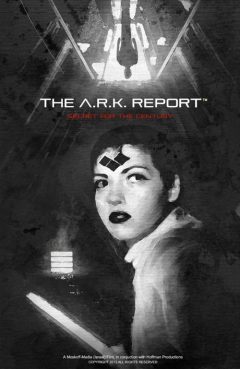
The A.R.K. Report
| 2013/01/01 | ||
| Film | 32 min | |
| SF | Israel, USA | |
A young girl travels into the future in order to find the ancient Ark of the Covenant and prevent it from falling into the hands of an evil army.
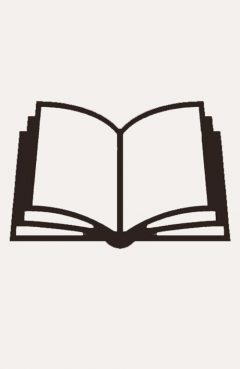
Airlords Of Han
| S - | Ep - | |
| Novella | - min | |
Sequel to Armageddon 2419 A.D.
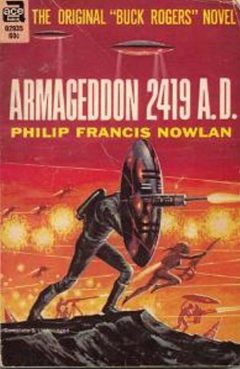
Armageddon 2419 A.D.
| S - | Ep - | |
| Novella | - min | |
Anthony Rogers is transported to the year 2419 by a strange cave gas. Later became the comic strip Buck Rogers. (Sequel: Airlords of Han) Nowlan's novella tells about America in the 25th century, conquered by Hans in 2109 AD and only now beginning to rebel. Sometime after World War I, nearly all the European powers joined forces against the United States. Although the US won the war, both sides were devastated by the conflict. Taking advantage of the chaos that followed, the 'Russian Soviets' (USSR) joined forces with the 'Mongolians' to take over Europe. The US collapsed economically and stagnated while the 'Mongolians' turned against the Russians and defeated them as part of their campaign of world conquest.
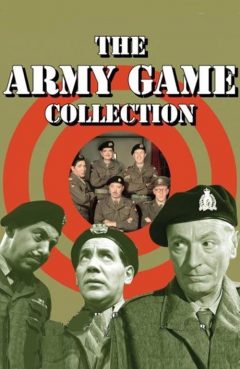
The Army Game
Ebeneezer Snudge
| S 3 | Ep 15 | 1958/12/26 |
| TV Series Episode | 30 min | |
| COM | UK | |
Peacetime soldiers find ways to dodge duty and pursue easy money.
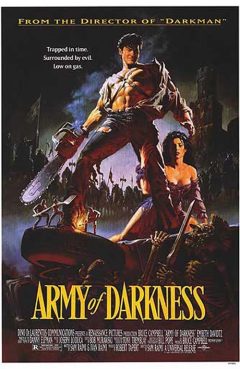
Army of Darkness
| 1993/02/19 | ||
| Film | 81 (77) min R | |
| COM FAN HOR | USA | |
A man is accidentally transported to 1300 A.D., where he must battle an army of the dead and retrieve the Necronomicon so he can return home.
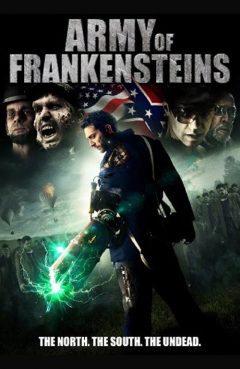
Army of Frankensteins
| 2013/11/10 | ||
| Film | - min | |
A young man travels back in time, finding himself entrenched in the Civil War with an army of Frankensteins.
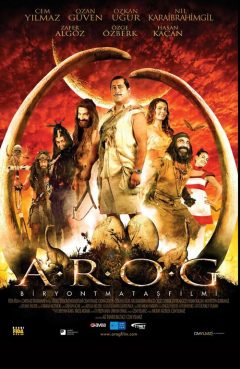
A.R.O.G
| 2008/12/05 | ||
| Film | 128 min | |
| COM FAN SF | Turkey | |
Commander Logar fools Arif and sends him 1,000,000 years back in time. He must civilize people from the past to reach today.
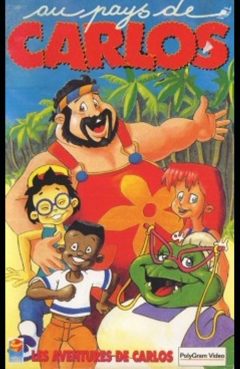
Around The World In Eighty Dreams
1 season, 26 episodes
| S - | Ep - | 1992/11/13 |
| TV Series | 24 min | |
| ADV FAM | ||
The show focuses on Carlos (based on the French singer Carlos), his parrot Oscar and three kids whom he adopted who live, together with him, on his own tropical Island. Carlos loves to tell the children stories about how he met world famous important figures in history in spite of the children's disbelief.
ARQ
| 2016/09/16 | ||
| Film | 88 min | |
| SF THR | USA, Canada | |
Trapped in a lab and stuck in a time loop, a disoriented couple fends off masked raiders while harboring a new energy source that could save humanity.
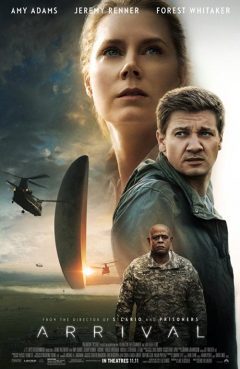
Arrival
| 2016/11/11 | ||
| Film | 116 min PG-13 | |
| DRA MYS SF | USA | |
A linguist is recruited by the military to assist in translating alien communications. When mysterious spacecraft touch down across the globe, an elite team - led by expert linguist Louise Banks - is brought together to investigate. As mankind teeters on the verge of global war, Banks and the team race against time for answers - and to find them, she will take a chance that could threaten her life, and quite possibly humanity.
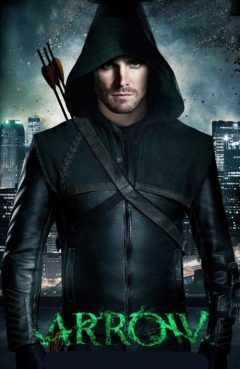
The Arrow
Legends of Yesterday
| S 4 | Ep 8 | 2015/12/02 |
| TV Series Episode | 44 min TV-PG | |
| ACT ADV CRI | USA | |
Oliver and Barry hide Kendra and Carter in a remote location while they try to figure out how to defeat Vandal Savage; Felicity, Thea, Diggle and Laurel work to come up with a weapon to destroy Vandal.
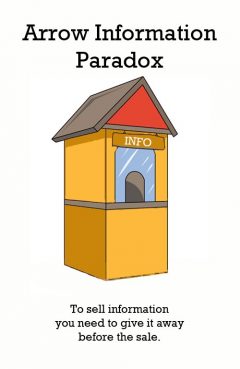
Arrow Information Paradox
To sell information you need to give it away before the sale.
| S - | Ep - | 1962// |
| - min | ||
The Arrow information paradox, named after Kenneth Arrow, American economist and joint winner of the Nobel Memorial Prize in Economics with John Hicks, is a problem that companies face when managing intellectual property across their boundaries. This happens when they seek external technologies for their business or external markets for their own technologies. It has implications for the value of technology and innovations as well as their development by more than one firm and for the need for and limitations of patent protection. Arrow's information paradox theory was set out in a 1962 paper. Cornell Law School professor Oskar Litvak has written in a paper for a conference at Stanford University that Arrow's "paper has been one of the foundational theoretical pillars of the incentive based theory of patents as Arrow's work is thought to rule out a strictly market based solution." A fundamental tenet of the paradox is that the customer, i.e. the potential purchaser of the information describing a technology (or other information having some value, such as facts), wants to know the technology and what it does in sufficient detail as to understand its capabilities or have information about the facts or products to decide whether or not to buy it. Once the customer has this detailed knowledge, however, the seller has in effect transferred the technology to the customer without any compensation. This has been argued to show the need for patent protection. If the buyer trusts the seller, or is protected via contract, then they only need to know the results that the technology will provide, along with any caveats for its usage in a given context. A problem is that sellers lie, they may be mistaken, one or both sides overlook side consequences for usage in a given context, or some unknown unknown affects the actual outcome. Discussions of the value of patent rights have taken Arrow's information paradox into account in their evaluations. The theory has been the basis for many later economic studies. These include theories that pre-patent innovation can be carried out only by a single firm.
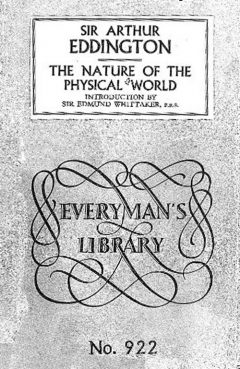
The Arrow of Time (Time's Arrow)
| S - | Ep - | |
| Book | - min | |
A concept developed in 1927 by the British astronomer Arthur Eddington involving the "one-way direction" or "asymmetry" of time. This direction, according to Eddington, can be determined by studying the organization of atoms, molecules, and bodies, and might be drawn upon a four-dimensional relativistic map of the world ("a solid block of paper").[1]
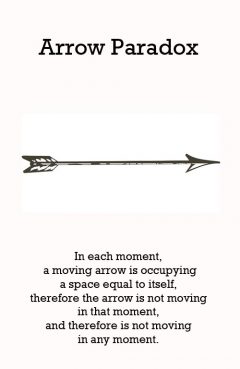
Arrow Paradox
in each moment, a moving arrow is occupying a space equal to itself, therefore the arrow is not moving in that moment.
| S - | Ep - | -460// |
| High | - min | |
Zeno's Arrow Paradox takes a different approach to challenging the coherence of our common sense concepts of time and motion. As Aristotle explains, from Zeno's ñassumption that time is composed of moments,î a moving arrow must occupy a space equal to itself during any moment. That is, during any moment it is at the place where it is. But places do not move. So, if in each moment, the arrow is occupying a space equal to itself, then the arrow is not moving in that moment because it has no time in which to move; it is simply there at the place. The same holds for any other moment during the so-called ñflightî of the arrow. So, the arrow is never moving. Similarly, nothing else moves. The source for Zeno's argument is Aristotle (Physics, Book VI, chapter 5, 239b5-32). In the arrow paradox (also known as the fletcher's paradox), Zeno states that for motion to occur, an object must change the position which it occupies. He gives an example of an arrow in flight. He states that in any one (duration-less) instant of time, the arrow is neither moving to where it is, nor to where it is not.[13] It cannot move to where it is not, because no time elapses for it to move there; it cannot move to where it is, because it is already there. In other words, at every instant of time there is no motion occurring. If everything is motionless at every instant, and time is entirely composed of instants, then motion is impossible. Whereas the first two paradoxes divide space, this paradox starts by dividing timeand not into segments, but into points. If everything when it occupies an equal space is at rest, and if that which is in locomotion is always occupying such a space at any moment, the flying arrow is therefore motionless. _ as recounted by Aristotle, Physics VI:9, 239b5
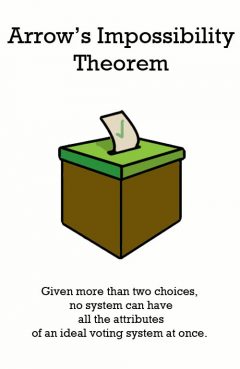
Arrow's Impossibility theorem
Given more than two choices, no system can have all the attributes of an ideal voting system at once.
| S - | Ep - | 1951// |
| - min | ||
In social choice theory, Arrow's impossibility theorem, the General Possibility Theorem, or Arrow's paradox, states that, when voters have three or more distinct alternatives (options), no rank order voting system can convert the ranked preferences of individuals into a community-wide (complete and transitive) ranking while also meeting a pre-specified set of criteria. These pre-specified criteria are called unrestricted domain, non-dictatorship, Pareto efficiency, and independence of irrelevant alternatives. The theorem is often cited in discussions of election theory as it is further interpreted by the Gibbard-Satterthwaite theorem.

The Art Of
Magic
| S 3 | Ep 6 | |
| TV Series Episode | 22 min | |
| REA | ||
Magic and masters of illusion are explored. Included: tap-dancing tricksters and time-traveling mediums.
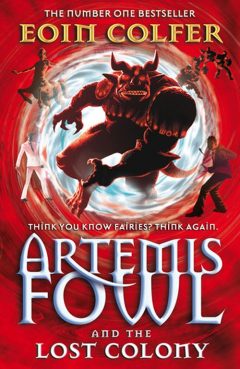
Artemis Fowl and The Lost Colony
| S - | Ep - | 2006/08/02 |
| Novel | 384 min | |
Fifth book in the Artemis Fowl series. Artemis must pair up with his old comrade Captain Holly Short to track down the missing demon, before the spell that holds a demon island, Hybras, in limbo dissolves completely and the lost demon colony returns violently to Earth. Artemis also ends up saving Holly by manipulating time.
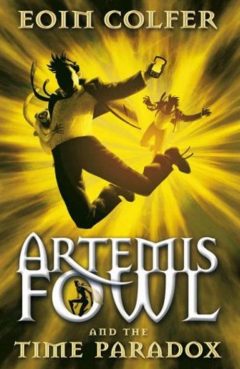
Artemis Fowl and the Time Paradox
| S - | Ep - | 2008/07/05 |
| Novel | - min | |
Sixth book in the Artemis Fowl series. After Angeline Fowl contracts spelltropy, Artemis travels back in time eight years to when he was ten years old to find a lemur that can help cure his mother. The plot twist in the end of the book creates a circular timeline that started the series. Artemis Fowl: The Time Paradox (known as Artemis Fowl and the Time Paradox in Europe) is the sixth book in the series Artemis Fowl by Irish writer Eoin Colfer. It was released in the U.S. on 5 July 2008, and on 7 August in the U.K.[1][2] At 432 pages, it is the longest book in the series. In Colfer's video blogs, he mentioned the book, saying it may not be the last, but the last one for at least 3 years.[3] It is followed by Artemis Fowl: The Atlantis Complex. Angeline Fowl, Artemis Fowl's mother contracts a debilitating disease, which Artemis worsens by trying to use magic. Artemis desperately contacts Captain Holly Short and 1, in hopes that they will be able to shed some new light on his mother's condition. They determine Angeline is suffering from Spelltropy, a fairy disease that is spread through the use of magic, and can only be cured by the brain fluid of the silky sifaka lemur of Madagascar. Unfortunately, the lemur is extinct, due to a ruthless deal Artemis made almost 8 years ago with a group called the Extinctionists. Foaly tells him that his mother will die without the cure. Artemis pleads for 1 to open up the time stream, allowing him to save the lemur, and thus his mother. Foaly argues against the idea, but due to Artemis' lying to Holly, saying that she infected Angeline with Spelltropy, Holly agrees to help Artemis immediately to make up for it, and Foaly had to give in.

Arthur
D.W.'s Time Trouble
| S 7 | Ep 8 | 2002/11/26 |
| TV Series Episode | 15 min TV-Y | |
| COM FAM | USA | |
D.W. imagines what it would be like if she switched ages with Arthur; After visiting an Amish community, Buster decides to take up their "simple" lifestyle.
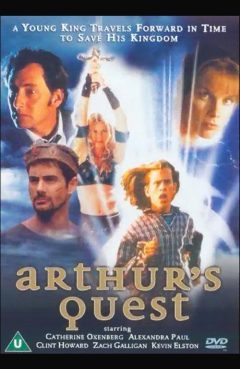
Arthur's Quest
| S - | Ep - | 2000/02/08 |
| TV Movie | 87 min PG | |
| ADV FAM FAN | USA | |
To escape the clutches of the evil warrior and sorceress Morgana, Merlin transports young King Arthur into modern day America. When Merlin comes back ten years later to retrieve him, he finds a hip 15 year-old Arthur who does not believe Merlin, nor does he want to return to the past. Merlin must convince Arthur of his true identity, before Morgana can retrieve Excalibur and allow the Dark Forces to take over the world.